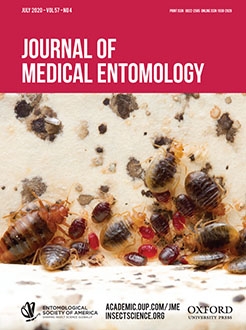Ixodids are blood-feeding ectoparasitic vectors of many disease agents that infect humans, livestock, and wild animals. As ixodid resistance to conventional synthetic acaricides becomes increasingly problematic, natural products are receiving greater attention as possible alternative control tactics. Formic acid, produced by ants, is a commercially available product for fumigating varroa mites, Varroa destructor Anderson &Trueman, infesting honey bee, Apis mellifera L., hives, and it has been reported to repel ixodids. Lone star tick, Amblyomma americanum (L.), larvae and nymphs were used as a model ixodid to investigate deterrent, repellent, and lethal effects of formic acid as a fumigant and contact toxin in vitro in the laboratory. Although formic acid failed to deter or repel A. americanum, it was highly toxic as a fumigant to larvae at a 1% concentration even when exposure was limited to 5 min. Contact by crawling on wet, moist, and dry treated substrates under ventilated conditions causes >90% mortality to larvae in 5% formic acid concentration treatments within 30–120 min, and temporary immersion killed ≈60% of the larvae by 24 h after they were removed from the 5% formic acid treatment solution. Substantial nymphal mortality occurred after 1–1.5 h following exposure to substrate treated with the 10% concentration and immersion killed ≈45% of the nymphs. It appears that formic acid volatiles are more lethal to A. americanum immatures than direct contact with the external integument.
How to translate text using browser tools
26 February 2020
Effects of Formic Acid on Amblyomma americanum (Ixodida: Ixodidae) Larvae and Nymphs
Allan T. Showler,
Bailee N. Dorsey,
Ryan M. Caesar
ACCESS THE FULL ARTICLE
It is not available for individual sale.
This article is only available to subscribers.
It is not available for individual sale.
It is not available for individual sale.

Journal of Medical Entomology
Vol. 57 • No. 4
July 2020
Vol. 57 • No. 4
July 2020
Amblyomma americanum
ants
Formicidae
Ixodidae
natural products




